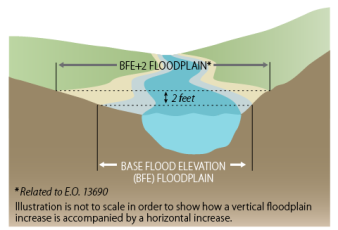Figure 1. Illustration of E.O. 13690 Floodplain
Using 2-Foot Vertical Increase Above Base Flood Elevation

Source: Congressional Research Service.
An issue for Congress is how federal floodplain policy shapes implementation of federal projects and programs. Floodplain policy has particular relevance for federal disaster recovery assistance and infrastructure support. President Trump and, earlier, Presidents Obama and Carter have provided direction on federal floodplain policy. This Insight describes this presidential direction and presents considerations for Congress.
Three executive orders (E.O.s) are directly relevant to current federal floodplain policy:
On August 15, 2017, President Trump signed E.O. 13807 in an effort to streamline federal infrastructure approval. Among other actions, E.O. 13807 revoked E.O. 13690. E.O. 13690 modified federal policy by amending E.O. 11988. A principal action of E.O. 13690 was to establish a Federal Flood Risk Management Standard (FFRMS). By revoking E.O. 13690, E.O. 13807 appears to have eliminated the FFRMS and returned federal floodplain policy to the original text of E.O. 11988.
E.O. 11988 requires that
Under implementation guidance for E.O. 11988, critical actions (e.g., construction of prisons and emergency services) are to avoid the 500-year floodplain if alternatives are available.
The stated aim of E.O. 13690 was to improve the flood resilience of communities and federal assets. Federal agencies were to apply the FFRMS as a minimum flood-resilience standard for federally funded projects, which the FFRMS defined as actions where federal funds were used for new construction, substantial improvement, or to address substantial damage to structures and facilities.
E.O. 13690 modified the requirements of E.O. 11988 largely by redefining the floodplain at the foundation of federal floodplain management policy. Rather than relying on the BFE floodplain, E.O. 13690 provided that the floodplain be determined by
Figure 1 illustrates the difference in the horizontal and vertical determination of the BFE floodplain and the BFE+2 floodplain.
|
Figure 1. Illustration of E.O. 13690 Floodplain |
 |
|
Source: Congressional Research Service. |
E.O. 13690 required that
Public comments indicated that some stakeholders (e.g., state floodplain managers, environmental advocates) supported E.O. 13690 and the FFRMS, believing that enhanced floodplain management and a resilience standard would reduce damages from floods and protect floodplains' natural systems. Other stakeholders (e.g., some county representatives, homebuilders, waterway industry interests) questioned the cost implications and implementation challenges and expressed concerns that compliance would hinder economic development in coastal and riverine communities.
For FY2017, Congress allowed for E.O. 13690 implementation to proceed, with a few exceptions. Agencies were developing or updating their regulations to reflect E.O. 13690 and the FFRMS when President Trump signed E.O. 13807. For example, the Federal Emergency Management Agency (FEMA) and the Department of Housing and Urban Development (HUD) had both published notices of proposed rulemaking. In December 2017, HUD provided notice that it was withdrawing the proposed rulemaking (pursuant to E.O. 13771 and E.O. 13777 on regulatory reform). FEMA currently requires compliance with building codes that incorporate the American Society of Civil Engineers (ASCE) flood-resistant design and construction standard (ASCE 24). The current standard (ASCE 24-14) requires most structures to be elevated to BFE+1 and critical structures to BFE+2 (or similarly elevated if the community uses a design-flood elevation [DFE] rather than a BFE) and establishes building performance requirements and siting considerations.
Congress may consider various issues related to federal floodplain management policies and federal programs that fund development in the floodplain. For example,
Congressional debates on these questions may be shaped by flood events and their impacts, as well as by fiscal and federalism considerations. Congressional discussions also may be informed by stakeholder views and assessments, such as the Government Accountability Office's identification of the NFIP in its 2017 High Risk Report, the Congressional Budget Office's analysis of potential hurricane damages, and the National Academy of Sciences report on disaster resilience.